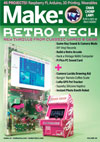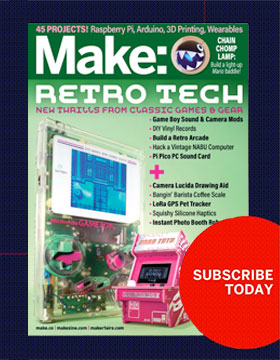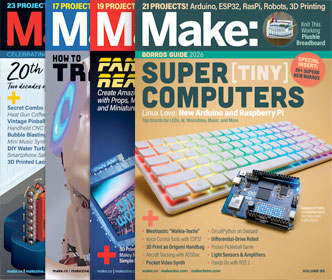Dhananjay Gadre of the Netaji Subhas Institute of Technology just posted a video of the LED hourglass he and Anurag Chugh is working on:
The LEDs are arranged in a circular conical fashion, to mimic the glass parts of a traditional hourglass, giving a 3-Dimensional appearance to the electronic hourglass. The system is equipped with a Z-axis accelerometer that detects the orientation of the hourglass and lights up the LEDs in the upper half, simulating the sand at the beginning of a measurement cycle. Subsequently, the LEDs in the lower half blink and light up in a fashion to simulate falling sand.
Look for some of their projects in future issues of Make!
Related:
18 thoughts on “3D LED Hourglass”
Comments are closed.
ADVERTISEMENT
Join Make: Community Today










There must be an easier way to detect which way up it is than using an accelerometer. Mercury switch perhaps.
Or is there something i’m missing.
jihgo, there is definitely more than one way to do it, but accelerometers are not too expensive, fun to work with, and don’t have the RoHS problem that a mercury switch would have. Spark Fun carries the ADXL330 on a breakout board for $30, but the component is pretty cheap in quantity.
With the circuitry shown you can’t flip the “hour glass” over anyways. Seems to me that if you’re going to use an accelerometer you might as well put all the guts on the side, or at least attached via cord so that you can still turn the glass over and have it stand upright. Then it would really act like a hour glass.
jihgo, mercury is a big no no. Cheaper alternative could have been using a magnet in a tube with hall sensors on both ends to detect the orientation. But we settled for an accelerometer which is simple although, expensive solution.
Hotown, one of the planned additions is to put the electronics and the battery in a transparent perspex tube so that it can be flipped over without having to hold it. Once that is done, it should be OK. Also, if you notice the ‘sand’ defies gravity in this version of the program. We are working on fixing that too, besides increasing the brightness of the LEDs.
This is pretty cool. In a nice case, this would make a great board-game clock.
Cool idea. The only problem that I see, is that the LEDs fill in backwards. They should start at the bottom and fill up. Otherwise, the “sand” is hovering in mid air.
gadre, why go through the trouble of magnets, do the same thing as a mercury switch but use a ball bearing instead of mercury, safe, easy to make and if i may say so myself, damn inventive….ha
Fusion, We did make that once.. and it worked great at the beginning, but the exposed contacts corroded/oxidized over time and it started troubling.
nice idea needs some work though.Oh well..have fun with your hourglass!tehe!